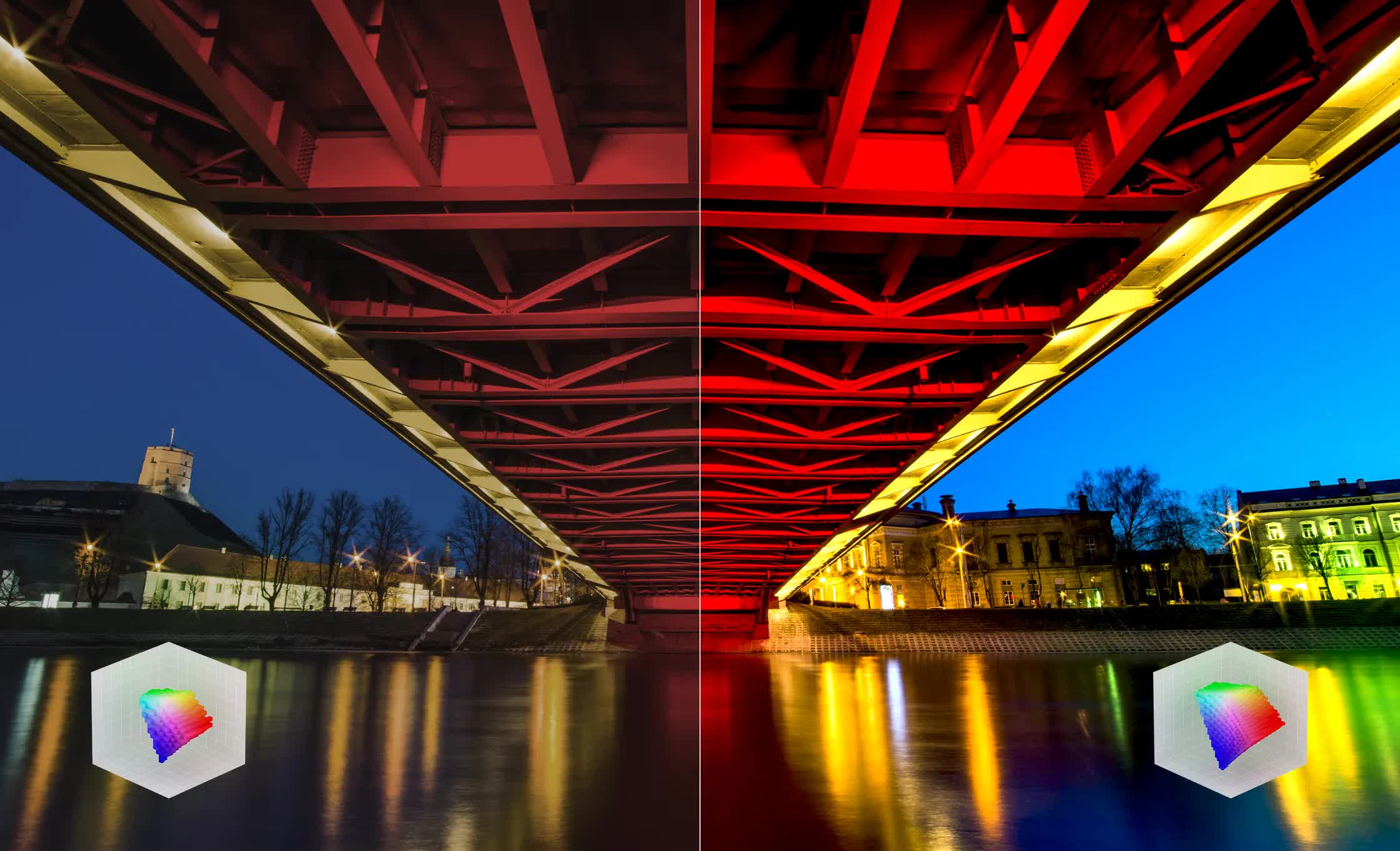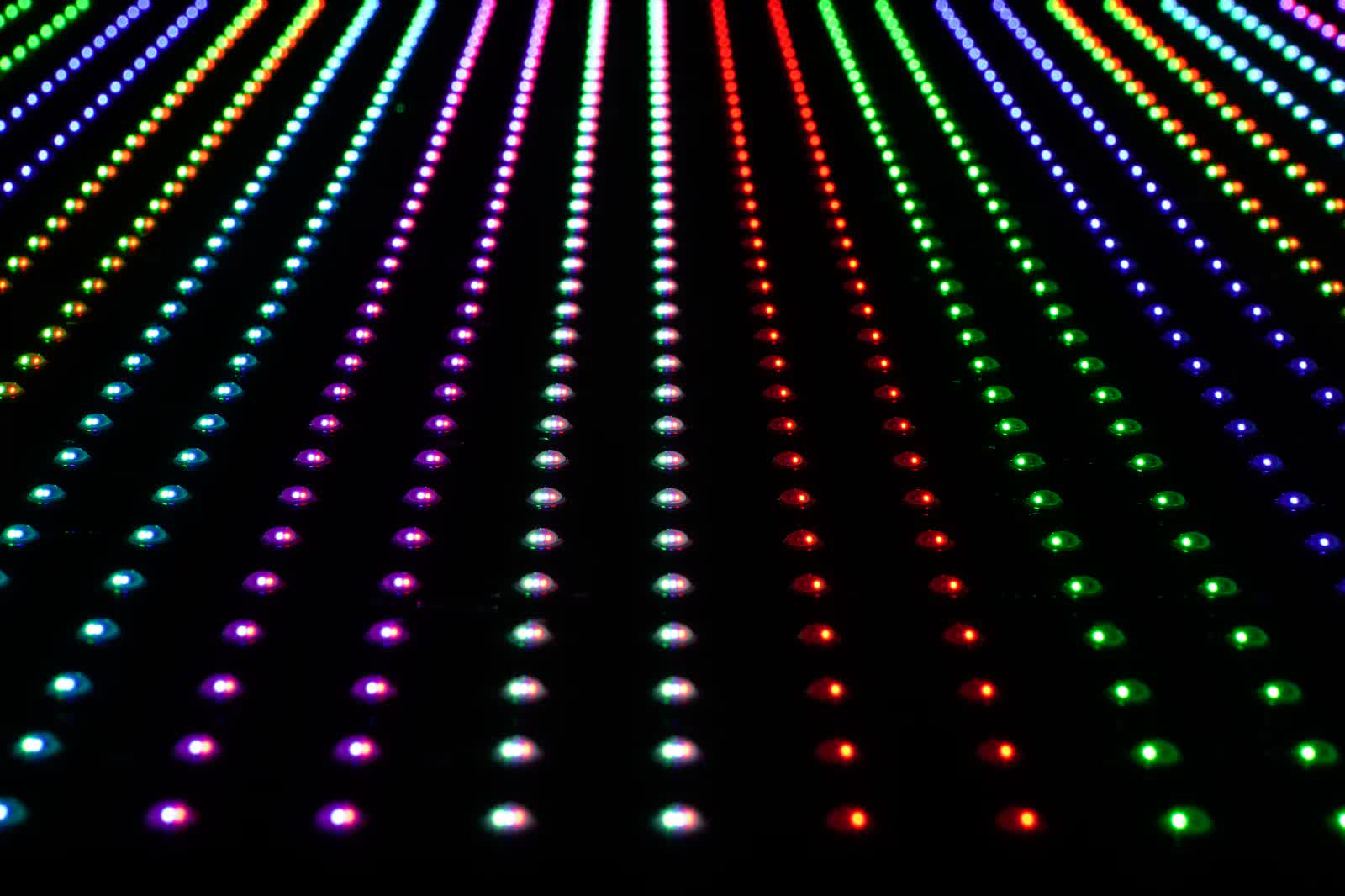Forward-looking: Sony has unveiled a new display technology called General RGB LED Backlight Technology, which is expected to improve how colors are presented on screens. This approach replaces traditional blue LEDs in mini-LED TVs with RGB LEDs, allowing the backlight to shine through with the correct color shade without relying on color filters or quantum dots. The result is a richer, more vibrant color palette and a brighter overall picture, potentially challenging OLED technology's dominance in the market.

The leading screen technologies in mid- to high-end TVs are mini-LED LCD and OLED. Mini-LED LCDs use hundreds or thousands of miniature LEDs behind an LCD panel to provide precise lighting where needed, which is excellent for HDR highlights without blooming. However, they are not perfect.
On the other hand, OLEDs use individual organic LEDs behind each pixel, allowing for better contrast and nuanced HDR, but they lack the brightness of mini-LEDs. Sony's RGB LED technology seeks to bridge this gap by offering superior color reproduction and brightness.
New RGB backlighting
One of the key advantages of this technology is its ability to produce colors with higher purity and trueness. By allowing each RGB color to emit light independently, the technology achieves high color purity, covering over 99 percent of the DCI-P3 color space and approximately 90 percent of the ITU-R BT.2020 standard.
This results in vibrant, wide-color gamut images, making them more lifelike and engaging. Sony claims that this technology can "faithfully reproduce specific hues and gradations," ensuring that scenes such as bright fall foliage are rendered with vivid detail and nuanced hues.
Sony's advanced backlight control technology maximizes the panel's performance. It dynamically allocates power to each RGB channel based on the scene, ensuring luminance is harmonious with color gradation. This approach prevents the concentration of light on bright elements, which can lead to flat images lacking subtle gradations.
Instead, it delivers nuanced hues and detailed images, even in single-tone scenes like a deep blue sky. As Sony explains, this technology allows for "delicate, nuanced hues even on large displays."
The new RGB LED technology also boasts impressive brightness, with peak levels exceeding 4,000 nits, a benchmark typically seen in professional reference monitors. This high brightness and its ability to maintain color accuracy and saturation positions it as a strong contender against OLEDs.
Additionally, the tech offers better support for wider viewing angles, a weakness of traditional mini-LEDs, which often lose saturation or develop a green tint at extreme angles.
While this is a Sony technology, it is not exclusive to Sony TVs. Hisense has already demonstrated its potential in one of its models, highlighting its scalability and potential affordability for larger screens.
If RGB LEDs can achieve faster response times for gaming, they could become a long-term replacement for OLEDs, much like OLEDs once surpassed plasma technology.
Sony is working with partners like MediaTek to bring this technology to mass production this year, with plans to integrate it into both consumer TVs and professional content creation displays.
Sony's advanced RGB LED display technology aims to rival OLED

